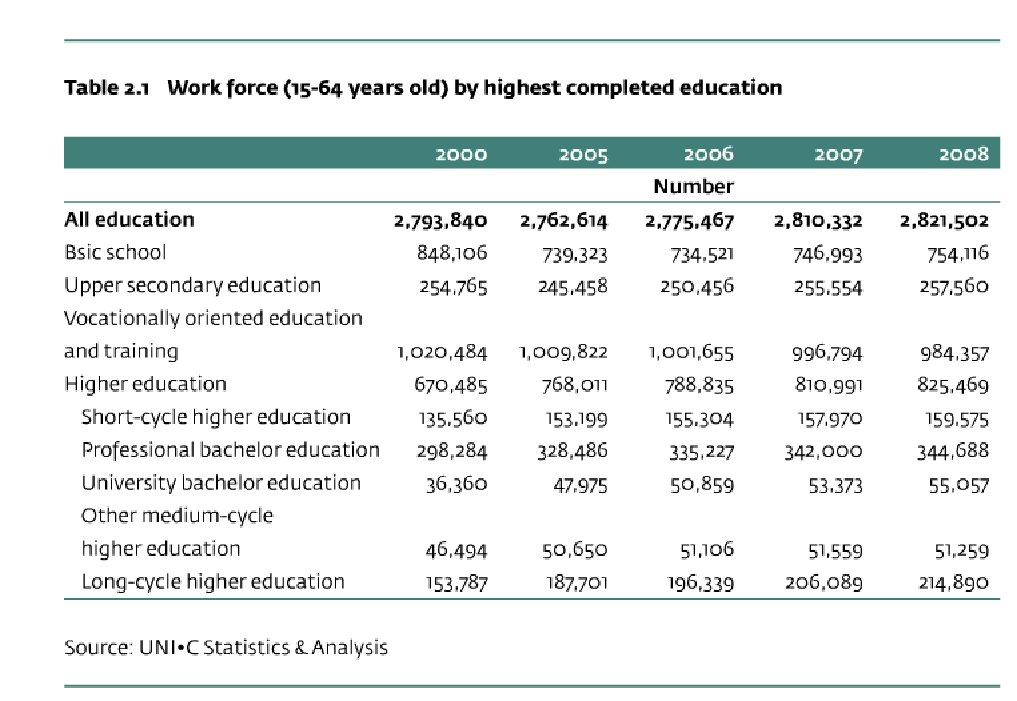| Denmark
The Profile model below shows a youth cohort’s paths through the educational system in Denmark:

The 25-year extrapolation of the youth cohorts in the period 2000-2008 shows that, slightly less than 81 % are expected to complete a youth education over the next 25 years after completing the 9th form. In addition, 4 % of a youth cohort in 2008 is expected to complete a higher education without youth education. Thus, a good 84 % in total of the youth cohort that completed 9th form in 2008 is expected to complete at least a youth education. Of the total year cohort, about 56 % will receive an upper secondary education and nearly 35 % a vocational education. In both categories, almost 10 % take both educations.
The figures of the profile model also show that only 2 % are expected not to have commenced an education within five years of completing 9th form. So practically everybody continues after 9th form (table 2.2). Three in four (76 %) end up with a vocationally qualifying education over 25 years after completing the 9th form. This proportion is split in 9 % in commercial, 15 % in technical, and 6 % in another vocationally oriented education (mainly social and health care). Almost 47 % end up with a higher education – of these 7 % with a short cycle higher education (KVU), 21 % with a medium-cycle higher education (MVU), and 19 % with a long-cycle higher education (LVU).
The work force in Denmark is comprised of persons in the 15-64 age group who are either working or jobless. In 2008, the work force numbered 2.82 million persons, corresponding to 78 % of the total population in the 15-64 age group. The table below show how the workforce by highest completed education:

During the period 2005-2008, there was a decrease of just fewer than 59,000 in availability in the Danish labour market. For one in four in the work force, corresponding to 754,000 individuals, basic school is the highest completed education. 35 %, corresponding to 984,000 individuals, have completed a vocationally oriented education and training, and a proportion of 29 % of the work force, corresponding to 825,000 individuals, has a higher education. In general, the work force has gradually achieved a higher education level. This change is primarily owed to generation differences.
The younger youth cohorts in the labour market have a higher education than the youth cohorts who are retiring in these years. Since 2005, the proportion with basic school as the highest completed education has been steady at just under 27 %, and the proportion with an upper secondary education has been steady at a good 9 %. During the same period, the total share with a higher education has increased slightly, while the share with a vocationally oriented education has decreased. |